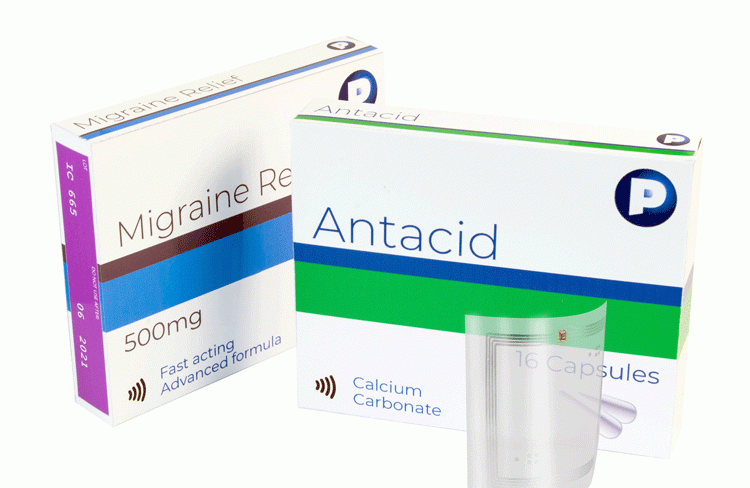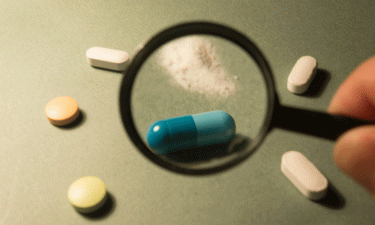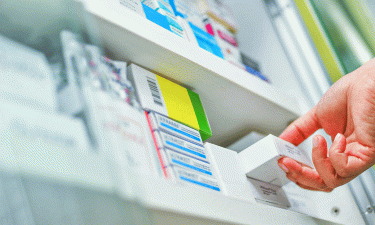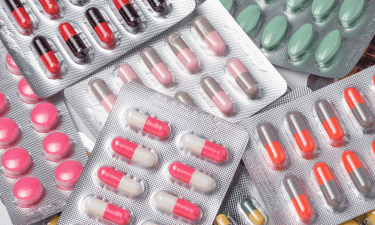How will technology aid an ageing world?
Posted: 26 September 2019 | Gillian Ewan (PragmatIC) | No comments yet
This article explores the potential of readily available technology to address current traceability challenges as well as more wide-ranging issues in the pharmaceutical industry.


According to Ernst and Young,1 the expected lifespan of someone born in 2015 will be more than 10 years longer than one born in 1970. Another way of thinking about this is that 612 million people were over 65 years old in 2015 (8 percent of the global population)2 and this is expected to increase to 1.58 billion (16 percent) in 2050. While this seems like a modest average growth per year over the period, the growth in the coming years is projected to be double that of the later years’ growth.
Increasing age brings with it a rise in the number of age-related illnesses; often with people suffering with multimorbidity or multiple chronic conditions, which requires the individual to take numerous prescription medicines, potentially supplemented by a range of over-the-counter (OTC) products. Combine these two factors with already over-stretched healthcare suppliers, who are all being encouraged to reduce costs, and this generates an urgent need to find innovative solutions.
A significant proportion of the pharmacy market is now OTC products,3 which are set to jump to $178 billion by 2024, driven by population growth in regions such as Latin America and Asia, coupled with expansion of the middle classes in these areas, as well as the de-prescriptionisation of many common products in the West.4 And whether prescription or OTC, increasing amounts of these drug products are being delivered by online stores such as Zur Rose and Shop Apotheke in Europe, not forgetting Amazon’s own line of OTC products5 launched in 2018, prodding the established bricks and mortar outlets to get their e-commerce offerings up to scratch.
Unfortunately, buying pharmaceutical products online is fraught with issues; for example, it is estimated that 80 percent of Viagra bought online is fake6 and the side effects of counterfeit products can be fatal.7


Many countries have recognised these issues and have been implementing new serialisation regulations; for example, the already-in-place European Falsified Medicines Directive (FMD)11 and the US Drug Supply Chain Security Act (DSCSA), which will deliver package level traceability by 2023.12 However, most of the solutions currently use a printed unique identification (UID) but the companies who provide the labels or packages are the converters who are highly fragmented – there are an estimated 2,200 label manufacturers in the US alone.13 These companies rely on high volume production runs, as margins are slim and the investment in digital printing lines to meet the UID requirements are too high for many of them.
Technology to the rescue
It is possible, however, to use technology to approach this problem from a different angle and to apply this solution to other problems faced throughout the lifecycle of pharmaceutical products; we don’t need to wait for GenZs to age before this makes sense. Smartphone ownership is growing fast in most “advanced economies”,14 for example in Japan, which has the highest median age of all countries: 44 percent of over 50s had a smartphone in 2018, up from 18 percent in 2015. Even if the uptake slows, we can imagine that within the next five years the majority of this demographic will have a smartphone. Other countries are even more advanced – the corresponding US and UK demographic is already at over 60 percent adoption and South Korea is at 91 percent.
…whether prescription or OTC, increasing amounts of these drug products are being delivered by online stores”
A large proportion of those smartphones already contain a technology called Near Field Communication (NFC),15 the technology behind the tap-to-pay experience, with Android phones supporting the use of the same technology for any application (the dominant mobile operating system worldwide)14 and Apple expanding its use for more and more scenarios.16
Encrypted information
NFC is a form of Radio Frequency Identification (RFID). RFID is the transmission of, at minimum, a UID between a transmitter and a reader using radio waves. NFC is the format that has a short-read range, but there is another RFID format that can be read at much longer ranges.17


Another application of the transmitter could be a package that includes an RFID tag. A tag (which is sometimes referred to as an inlay, as they are inlaid behind labels or inside packages) in this case is usually simply an Integrated Circuit (IC) mounted on a substrate (paper or film) that also has an antenna either etched or printed on to it. This is the simplest form of a tag, called a passive tag, as it contains no batteries and needs the reader to provide it with the necessary energy to wake up and send the signal to the reader. This functionality enables the cost of the tag in the package to be kept low. In this use case the reader could either be the smartphone or a special reader.
The long-range RFID always requires a special reader, though there are some that can attach to a smartphone; a short-range RFID can use either.
Applications in the pharmaceutical market
As previously noted, the first point is that the cost of the tag must be kept very low, since many OTC products have tight margins. This naturally lends itself to keeping the amount of information stored and transmitted to a minimum. If we limit it to just the UID, the rest of the information can be provided by the reader via a cloud-based software platform that can aggregate data with the UID; for example, location and time stamps. If this UID is applied to the product at the point of manufacture, all the data associated with location of manufacture, date, ingredients, their provenance and related information about the packaging can be linked in the software platform and then the journey of the product through the supply chain to the consumer can be added at each stage.
There is also the opportunity for more complex interactions with consumers using technology”
This data can then be used by the supplier, retailer and consumer to authenticate the product, and also be used to ensure that it has not come through grey market channels. In this simple case, there is no use of encryption, so potentially the UID could be copied and added to non-authorised products; but with a real-time system, hot spots of repeated UIDs would become obvious very quickly.
There is also the possibility to implement a non-standard RFID communications protocol, if the supplier wanted to add a covert mechanism to ensure supply chain integrity.
For the healthcare provider or pharmacy, RFID can also be used to optimise stock levels and ensure that the right products are not lost in the system. There is plenty of evidence from the retail industry on the effectiveness of the technology in this area: average stock accuracy increases from 63 percent to 95-99 percent; reduction in stock holding by 20 percent; and reduction of shrinkage by 75 percent,19,20 which all lead to reductions in cost that would probably be even greater in the prescription medicines area.
The consumer can also benefit from the system: as they will be pulling information from the internet, it will be much simpler to ensure that interaction is compliant with the new GDPR rules in force in Europe. The consumer can be offered choice regarding the amount of personal information they wish to share with the platform on initial contact and depending on their choice, can be provided either with generic information or more time, location and lifecycle stage-related data.


Another part of the product lifecycle that is not often mentioned is end-of-product life. In the environmentally conscious world we live in, providing the consumer with information relating to how to recycle the packaging would be well received.21
There is also the opportunity for more complex interactions with consumers using technology. Companies such as Scheiner MediPharm have developed smart blister packs to enhance medication adherence.22 Health insurance systems are trying to improve this using incentives,23 but the reasons for non-adherence are complex and it will require a combination of techniques to make any real difference. Integrating intelligence into every part of the patient’s connection with their regime in a cohesive system offers a great opportunity to move the needle.
In summary, the time is right to start designing technology-based systems that can really make a difference in a rapidly ageing world. We all carry an increasing amount of intelligence in our pockets that can be leveraged to improve many aspects of our lives by including a small amount of intelligence in everyday products.
References
- https://www.ey.com/en_gl/life-sciences/why-an-aging-population-means-opportunity-but-a-lot-of-work-too
- https://ourworldindata.org/world-population-growth
- https://www.contractpharma.com/contents/view_blog/2018-02-23/otc-drugs-market-revenue-to-exceed-178b-by-2024
- http://www.pulsetoday.co.uk/clinical/clinical-specialties/prescribing/nhs-england-issues-guidance-to-curb-over-the-counter-prescribing/20036459.article
- https://www.cnbc.com/2018/02/20/amazon-has-quietly-launched-an-exclusive-line-of-over-the-counter-health-products.html
- https://www.cnbc.com/2018/01/26/start-up-delivers-viagra-to-your-door.html
- https://www.ctvnews.ca/health/counterfeit-medications-a-growing-problem-in-canada-warns-new-report-1.3795239
- https://www.gov.uk/government/news/uk-seizes-more-than-2-million-of-fake-medicines-as-part-of-international-crackdown
- https://www.foreveryoungmedspa.us/health/illegal-fillers-can-leave-devastating-results/
- https://healthresearchfunding.org/20-shocking-counterfeit-drugs-statistics/
- https://ec.europa.eu/health/human-use/falsified_medicines_en
- https://www.rdmag.com/article/2017/08/experts-comment-fdas-dscsa-serialization-extension-manufacturers-now-have-until-2018
- http://www.labelsandlabeling.com/sites/labelsandlabeling/files/magazine/labels-vol40-issue3-2018/content/labels-vol40-issue3-2018.pdf
- http://gs.statcounter.com/os-market-share/mobile/worldwide/#monthly-201804-201904
- https://thenextweb.com/contributors/2018/04/07/nfc-underdog-tech-set-explode-next-five-years/
- https://www.nfcworld.com/2019/05/08/362603/apple-pay-boss-reveals-us-merchants-plans-to-use-nfc-tags-for-payments-and-loyalty-sign-up/
- https://blog.atlasrfidstore.com/near-field-communication-infographic
- https://en.wikipedia.org/wiki/Man-in-the-middle_attack
- https://mojix.com/business-case-rfid-retail/
- https://www.gs1uk.org/our-industries/retail/apparel/the-true-impact-of-rfid-in-retail-report
- https://www.forbes.com/sites/solitairetownsend/2018/11/21/consumers-want-you-to-help-them-make-a-difference/#71c00b9e6954
- https://m.schreiner-group.com/en/press/detail-smp-usa/schreiner-medipharm-develops-smart-blister-pack-to-enhance-medication-adherence-in-clinical-trials.html
- https://www.hsph.harvard.edu/news/press-releases/increasing-cholesterol-medication-adherence-with-financial-incentives-may-be-cost-effective/
Related topics
Drug Counterfeiting, Drug Markets, Drug Safety, Drug Supply Chain, Packaging, QA/QC, Technology
Related organisations
Amazon, Scheiner MediPharm, Shop Apotheke, World Health Organization (WHO), Zur Rose









